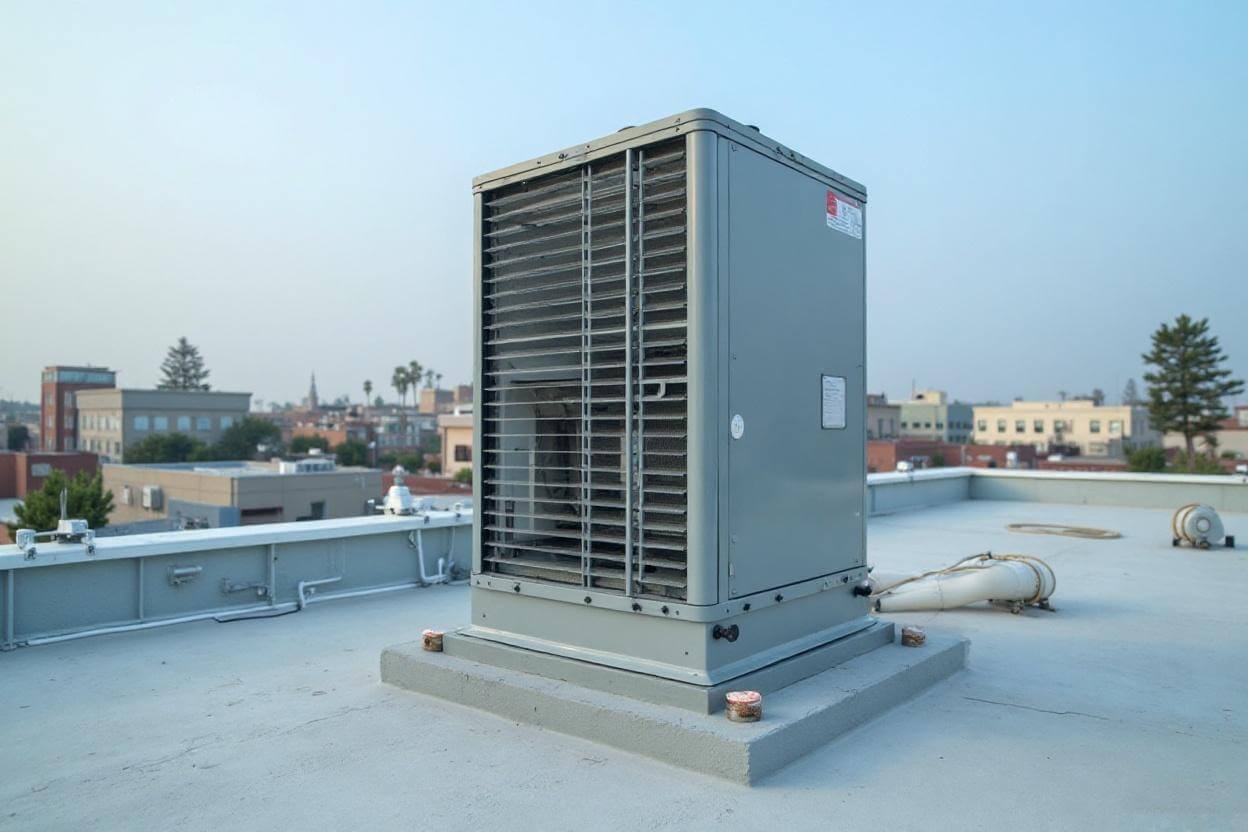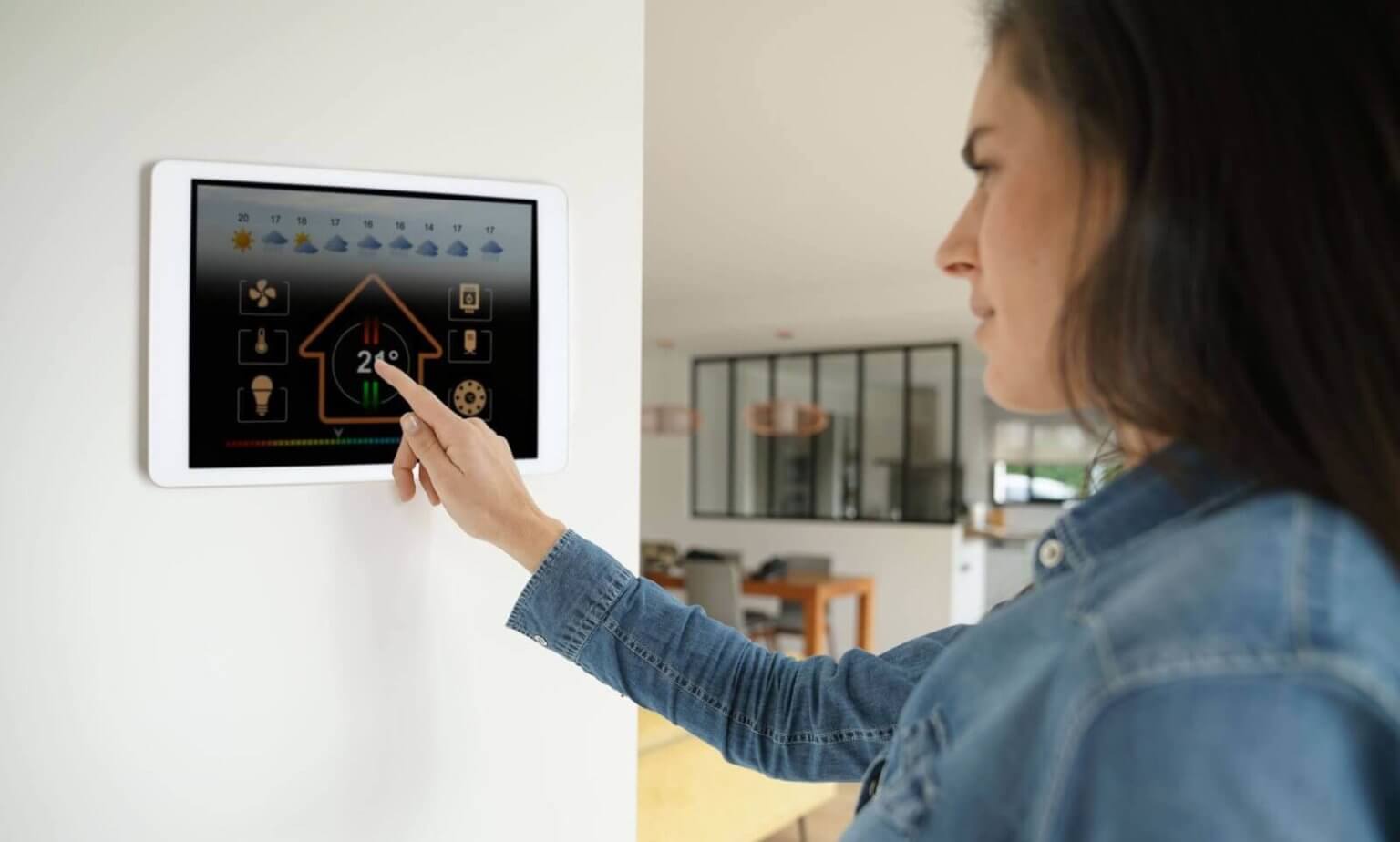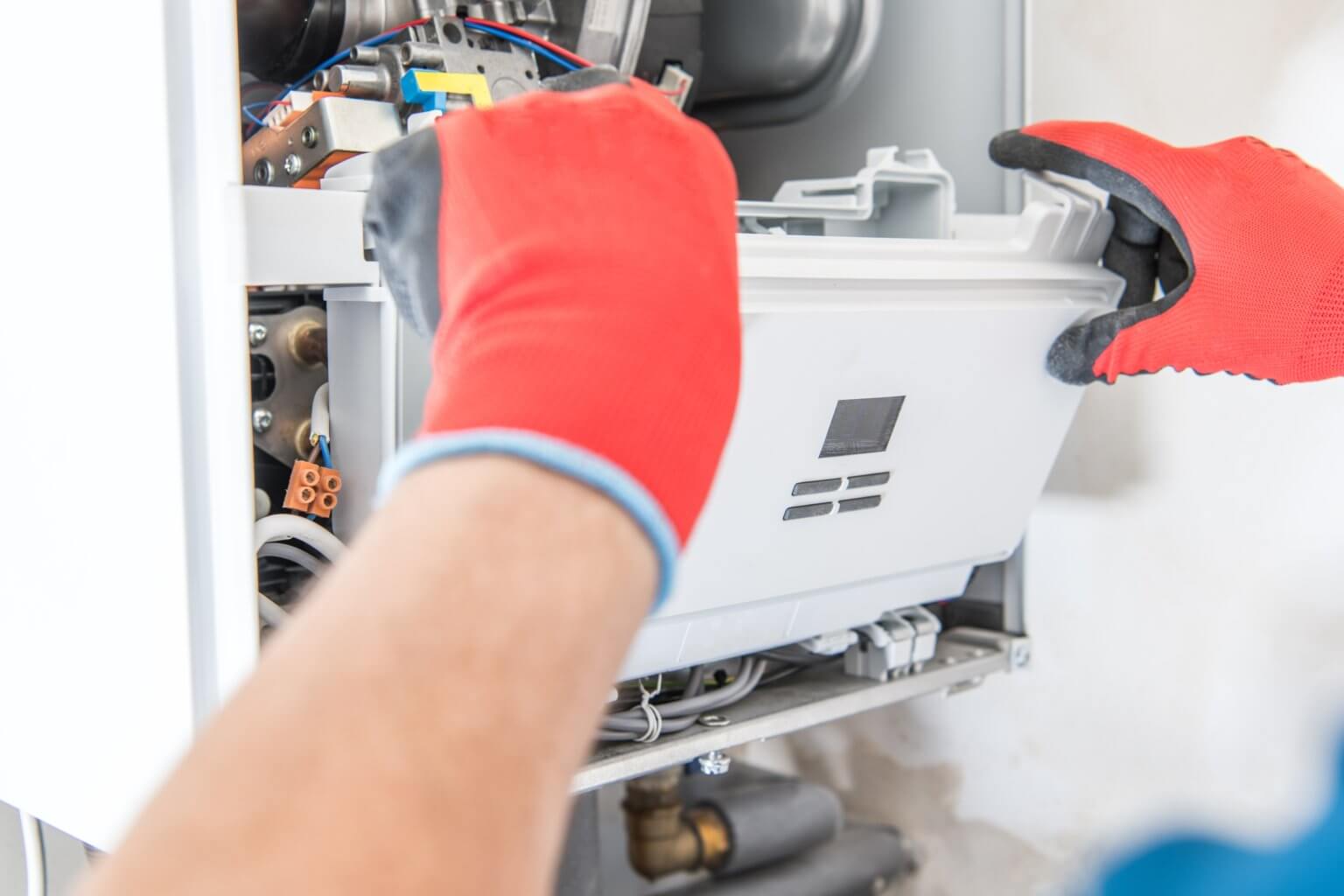HVAC Upgrade Costs Explained: Pricing, Options, and What a 2,000 Sq Ft Home Really Pays
Homeowners in Canoga Park usually ask two questions before an HVAC system upgrade: how much will it cost, and what will fit the house without wasting energy or comfort. Prices vary, but real numbers and local context help. This guide covers typical costs for a 2,000 sq ft home in Canoga Park, common system choices, what drives price swings, and where the smart money goes in the San Fernando Valley climate. It also shares how Season Control Heating & Air Conditioning sizes, prices, and installs systems that hold up in extreme heat and cool nights, from Sherman Way condos to family homes near Lanark Park.
What a 2,000 Sq Ft Home Usually Pays in Canoga Park
For a standard single-family home of about 2,000 square feet, a complete HVAC system upgrade that replaces the condenser, indoor coil or furnace/air handler, and thermostat usually lands between $11,000 and $18,500 installed. That range assumes mid to high-efficiency equipment from major brands, proper permits, a new pad and disconnect, line set flush or replacement, and code updates that inspectors ask for in Los Angeles County. If new ductwork is needed, total cost often rises to $16,000 to $27,000, depending on how accessible the attic or crawl space is and how many supply runs must be reworked.
Those numbers rise or fall with SEER2 ratings, brand tier, duct condition, electrical capacity, refrigerant line accessibility, and whether zoning is added. Heat pumps cost slightly more upfront than straight AC with a gas furnace, though utility savings shorten the gap.

Why Canoga Park Homes Have Their Own Pricing Curve
Local climate and housing stock shape price more than most people expect. Canoga Park summers are long and hot, with many days over 95°F and heat events that push past 105°F. That puts more load on condensers, fan motors, and duct systems. Many homes built from the 1950s to the 1990s have older duct layouts, limited attic insulation, and electrical panels that pre-date modern HVAC loads. Townhomes near Owensmouth Avenue often stack mechanical spaces, which complicates coil and furnace access. Ranch homes near Roscoe Boulevard tend to have long duct runs and low attic clearances. Each of these pushes installation labor in a different way.
Season Control’s techs see three patterns that affect cost most:

- Undersized return air: Older returns choke airflow, which burns out compressors and shortens blower motor life. Fixing this means adding or enlarging returns, which adds material and carpentry time.
- Sun-exposed attics: Uninsulated or low-insulation attics create hot supply air and raise static pressure. New ducts with proper R-value and layout can cut runtime by 10 to 20 percent.
- Panel and breaker limits: Heat pumps and high-SEER condensers need proper circuits. Many panels in Canoga Park need at least a breaker upgrade. Some need partial panel work to meet code.
Price Ranges by System Type
Central AC with gas furnace remains common in the Valley, but heat pumps have surged due to improved cold-weather performance and utility rebates. Ductless systems shine for additions, garages, or small homes with uneven loads.

- Central AC plus gas furnace (split system): $10,500 to $17,500 installed for a 2,000 sq ft home using 14.3 to 17 SEER2 AC and an 80 to 96 AFUE furnace. Two-stage or variable-speed air handlers and furnaces land at the higher end but deliver better comfort and quieter operation.
- All-electric heat pump (split system): $12,500 to $19,500 installed for 15 to 18 SEER2 heat pumps with variable-speed air handlers. Requires adequate electrical service. Savings improve where natural gas prices are higher or where off-peak electric rates apply.
- Ductless mini-split (multi-zone): $8,000 to $16,000 for two to four zones. Full-house ductless for a 2,000 sq ft home typically runs $16,000 to $28,000, depending on the number of heads and line set runs. Great for homes with no existing ducts or costly duct replacement.
- Packaged unit on roof: $12,000 to $18,000 for a gas pack or heat pump package, including crane, curb adapter, and curb sealing. Common on flat-roof homes and older small commercial spaces that became residential.
If ducts need replacing, add $5,000 to $12,000 depending on number of runs, insulation rating, platform rebuilds, and whether a closet or attic air handler needs refitting.
What Size System Does a 2,000 Sq Ft Home Need?
Square footage gives a rough start, but load calculations make the final call. In Canoga Park, a tight 2,000 sq ft home with good insulation and modern windows might need 2.5 to 3.0 tons. An older home with original single-pane sliders, minimal attic insulation, and high sun exposure can need 3.5 to 4.0 tons. Season Control performs Manual J load calculations, checks attic insulation levels, measures return and supply sizes, and verifies ducts by static pressure test. Oversizing is common in the Valley and causes short cycling, humid rooms, and early equipment failure. Right-sizing supports even cooling during late-afternoon heat peaks and keeps energy bills stable.
What Drives Price Up or Down
Brand matters, but installation quality shapes both cost and lifespan. The following factors change final pricing more than sticker lists on equipment:
- Efficiency tier and compressor type: Single-stage units cost less upfront. Two-stage offers better comfort and quieter operation in the afternoon and overnight. Variable-speed delivers the smoothest temperatures, lower humidity, and the best acoustics, and improves filter and coil life by running longer at lower speed. Expect a $1,500 to $4,000 jump from single-stage to variable, depending on brand.
- Duct condition and design: A static pressure over 0.8 in. w.c. signals a problem. Tight turns, undersized trunks, and leaking joints rob capacity. New ducts with aerodynamics in mind can reduce the required tonnage by a half-ton, which can save more than duct materials cost.
- Line set and refrigerant: R-410A dominates current systems. Some higher-end heat pumps now use R-32. A clean, properly sized line set matters. If the old line set is buried or kinked, replacement adds labor and sometimes drywall patching.
- Electrical capacity: Heat pumps and variable-speed air handlers call for correct breakers, disconnects, and whip. Panel upgrades can add $1,500 to $4,000 if needed, though many homes only need breaker changes and a new disconnect.
- Access and code items: Attic platforms, drain pans with float switches, condensate pumps, smoke and CO detectors near gas furnaces, and roof curbs. Expect Los Angeles County permit and HERS testing fees as part of a proper bid.
Typical Line-Item Anatomy for a Full Upgrade
A complete HVAC system upgrade quote for a 2,000 sq ft Canoga Park home usually includes equipment, pads or platforms, sheet metal transitions, electrical, refrigerant lines, condensate management, thermostat, permits, HERS testing, and haul-away. On a mid-efficiency heat pump with existing ducts that pass a pressure test, the breakdown often looks like this in percentage terms: about 55 to 65 percent equipment, 25 to 35 percent labor, and 5 to 10 percent permits and testing. Duct replacement shifts more into labor and materials.
Real-World Scenarios Seen Locally
A three-bedroom ranch near Parthenia Street, 2,020 sq ft, with a 20-year-old 4-ton AC and 80% furnace. Ducts leaked at 28 percent and returns were undersized. The homeowner chose a 3.5-ton two-stage heat pump after a Manual J showed lower load with new ducts. Total project included new R-8 ducts, two new returns, a variable-speed air handler, new pad and disconnect, line set flush, and smart thermostat. Final price was $21,900 before utility rebates. Post-upgrade energy bills dropped about 18 percent over summer, and the afternoon temperature swings stopped.
A townhome off De Soto Avenue, 1,950 sq ft, had a closet furnace and coil with difficult service access. The homeowner wanted to keep gas heat. A 16 SEER2 two-stage AC with a 96% AFUE furnace fit the space with a new return and redesigned plenum. Minimal duct work was needed. The job came in at $14,800 with permits. The unit ran quieter, and airflow improved without adding a ton of capacity.
A detached garage conversion near Sherman Way needed cooling and heating with no duct tie-in. A three-zone ductless system cost $11,600 installed, including condensate pumps, line set covers, and surge protection. Zoning allowed the family to cool only the spaces in use.
Energy Efficiency vs Upfront Cost
High-efficiency equipment lowers bills, but the right balance depends on usage. In Canoga Park, the AC runs hard for several months, so a jump from 14.3 SEER2 to 17 or 18 SEER2 has real value in comfort and noise. Payback often lands between 5 and 9 years for households with regular summer use and moderate electric rates. Variable-speed compressors and ECM blowers also save money by running longer at low speed, where they remove more heat per watt and reduce compressor stress.
If budget forces a choice, the smart move is often mid-tier efficiency paired with corrected ducts, added return air, and a smart thermostat. Those deliver comfort and savings you can feel right away. Overspending on a high-SEER condenser while keeping choked ducts rarely pays off.
Heat Pump vs Gas Furnace in the Valley
Heat pumps work well in the San Fernando Valley’s mild winters and hot summers. They can heat efficiently down to the mid-30s before auxiliary heat is needed. Electric rates versus gas rates tip the scale, and so do available rebates. Many families choose heat pumps to reduce gas use and run a single piece of outdoor equipment year-round. Others keep a gas furnace for fast winter heat and familiarity.
From a maintenance standpoint, heat pumps ask for clean coils and clear condensate lines because they run in both seasons. Gas furnaces require annual safety checks, especially older 80% models near bedrooms or living spaces. Either way, a variable-speed indoor blower improves comfort by smoothing airflow through existing ductwork.
Ductwork: Repair or Replace?
Season Control starts with a pressure test and a visual inspection. If leakage is under 10 percent and the trunks are sized well, sealing and minor modifications can be enough. If ducts leak above 20 percent, have crushed runs, or use old flex with failed inner liners, replacement is the honest fix. New ducts allow correct trunk sizing, shorter runs, proper takeoffs, and better return placement. In many Canoga Park attics, replacing ductboard plenums with sheet metal and adding balancing dampers reduces noise and evens temperatures between the sunny and shaded sides of a house.
Permits, HERS Testing, and Warranty Terms
Los Angeles County requires permits on HVAC system replacements. HERS testing confirms airflow, refrigerant charge, and duct leakage meet standards. It adds cost but protects homeowners with a inspected, documented installation. Season Control includes permit handling and HERS in project pricing and schedules testing alongside final walkthroughs.
Warranties vary by brand and model. Ten-year parts is common when equipment is registered, with labor warranties ranging from one to ten years depending on the package. Homeowners should confirm whether labor is covered past year one and whether maintenance is required to keep coverage valid. The company recommends one professional maintenance visit before summer and another before winter if a heat pump is installed; at minimum, an annual visit keeps coils clean and confirms safety controls.
What a Strong Proposal Looks Like
A clear proposal avoids vague lines and last-minute add-ons. It should show equipment model numbers, SEER2/EER2/HSPF2 ratings, furnace AFUE if gas is used, tonnage, blower type, and thermostat model. It should state whether the line set is replaced or flushed, how condensate is routed and protected, and whether float switches are included. Duct scope should list new R-value, number of registers and returns, and any platform or plenum rebuilding. Electrical scope should include breaker sizing, disconnects, and surge protection if selected. Finally, it should list permit and HERS fees rather than hiding them.
Season Control’s estimates in Canoga Park include those details, along with photos of the existing conditions and a short note on any code items that inspectors will look for.
Timeframe and What Installation Day Feels Like
Most full-system upgrades take one long day or two regular days. Duct replacement usually adds a day. Homeowners can expect power shutdowns in short windows while techs set the disconnect and breakers. Noise stays mostly to the attic and outside. Crews place floor and stair protection, and vacuum at the end. HERS testing typically follows within a few days. Smart thermostat setup and app pairing happen before techs leave.
Hot-day scheduling fills fast during heat waves. Spring and fall shoulder seasons offer more flexible dates and sometimes better equipment availability and pricing.
Utility Rebates and Financing Options
Rebates change year by year. Heat pumps often qualify for higher rebates than straight AC. Duct sealing and insulation improvements may also qualify if they are part of the HVAC system upgrade. Utility programs may require pre-approval, specific equipment ratings, and post-install verification.
Season Control helps file rebate paperwork and offers payment plans for qualified homeowners. Many clients choose low monthly payments that align with energy savings, so cash flow stays neutral or improves in summer months.
Maintenance After the Upgrade
Good systems stay good with light, regular care. Change or wash filters every one to three months, more often during wildfire smoke or heavy pollen. Keep a two-foot clearance around outdoor units and clean leaves from coil fins without bending them. Check the condensate drain visually during summer. Schedule professional service ahead of the first heat wave and before the heating season if using a heat pump or gas furnace. Small issues found early prevent expensive compressor or blower failures later.
Red Flags That Raise Costs Later
Bids that are far below the local average often skip important steps. Watch for proposals that ignore load calculation, duct testing, permits, or HERS. Avoid any installer who sizes by square footage alone or pushes higher tonnage to cover comfort complaints without investigating airflow. Low bids that reuse a contaminated line set after a compressor burn-out, skip a vacuum to 500 microns, or leave refrigerant charge “close enough” can cost more within a year than the upfront savings.
How to Choose Between Close Bids
If two bids are within a few thousand dollars, look at blower type, compressor staging, duct scope, return sizing, and warranty coverage. Ask for the static pressure reading of the current system and the target after upgrade. Ask how the installer will control humidity on mild days, and whether they recommend continuous low-speed circulation to even temperatures in west-facing rooms. Real answers show hands-on experience.
The quieter system with steadier temperatures usually wins owner satisfaction, even if its SEER2 is slightly lower. Comfort, noise, and reliability are where homeowners feel value daily.
A Straightforward Path to a Fair Price
Homeowners in Canoga Park can set the project up for clear pricing by HVAC system upgrade taking a few steps before the site visit. Gather energy bills for a typical summer and winter month, note rooms that are hot or cold, and make a quick list of must-haves like a smart thermostat, zoning, or a dedicated mini-split for a garage workspace. During the visit, ask the tech to measure return openings, check duct insulation, and read the panel label for available capacity. The estimate that results will be more accurate and need fewer change orders.
Here is a simple checklist to keep the process smooth:
- Ask for a Manual J load calculation summary and the proposed tonnage.
- Confirm permit, HERS testing, and warranty terms in writing.
- Request duct test results and a plan to fix high static pressure.
- Review model numbers, efficiency ratings, and blower/compressor type.
- Clarify line set plan, condensate safety switches, and electrical scope.
What Season Control Delivers in Canoga Park
Season Control Heating & Air Conditioning has installed, replaced, and serviced systems across Canoga Park for decades. The team knows how attic heat, older ducts, and sun-exposed rooms stress equipment in this neighborhood. Bids include real load calculations, duct assessments, and straight talk on whether heat pump or gas furnace makes better sense for the home and the budget. The company handles permits and HERS testing, coordinates rebates, and stands behind both equipment and labor. Installers leave the site clean, walk homeowners through the thermostat and maintenance basics, and schedule the first checkup.
If a homeowner needs a fast replacement during a heat wave, Season Control prioritizes safety, correct charge, and airflow, even under pressure. If timing allows, the team plans duct or return upgrades that reduce runtime and noise for years to come. The goal is steady comfort, lower energy use, and equipment that lasts.
Ready to Price an HVAC System Upgrade?
A proper quote for a 2,000 sq ft Canoga Park home takes one focused visit. Season Control will measure, test, and share options that match comfort goals and budget. Expect clear pricing for central AC with gas furnace, heat pump solutions, and ductless options, plus honest advice on what the house actually needs.
Call Season Control Heating & Air Conditioning to schedule an in-home assessment in Canoga Park. Ask for a load calculation, duct test, and a side-by-side comparison of system types. The team will price the upgrade right, set realistic timelines, and install a system that performs through Valley summers.
Season Control Heating & Air Conditioning provides HVAC services in Canoga Park, CA. Our team installs, repairs, and maintains heating and cooling systems for residential and commercial clients. We handle AC installation, furnace repair, and regular system tune-ups to keep your home or business comfortable. We also offer air quality solutions and 24/7 emergency service. As a certified Lennox distributor, we provide trusted products along with free system replacement estimates, repair discounts, and priority scheduling. With more than 20 years of local experience and hundreds of five-star reviews, Season Control Heating & Air Conditioning is dedicated to reliable service across Los Angeles. Season Control Heating & Air Conditioning
7239 Canoga Ave Phone: (818) 275-8487 Website: https://seasoncontrolhvac.com/hvac-retrofits-upgrades-la-ca/
Canoga Park,
CA
91303,
USA